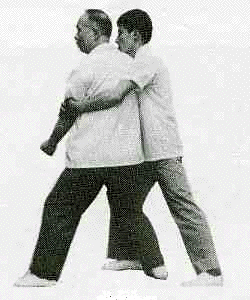THINGS TO DO TO COPE WITH STRESS:
Relaxation:
Deep relaxation activities:
- Massage
- Progressive Muscle Relaxation (PMR)
- Autogenics-training patients in self-induced relaxation
- Affirmations-something that is affirmed; a statement or proposition that is declared to be true
- Biofeedback-a method of learning to control one's bodily functions by monitoring one's own brain waves
- Music Focus
- Guided imagery
- Breath Focus
- Meditation
Active relaxation activities:
- Sports/Exercise
- Tai Chi
- Dancing
- Jogging
- Laughing
- Stretching
- Walking
- Yoga
Nutrition:
- Eat a balanced diet
- Decrease amount of caffeine and sugar in diet
Help Yourself get a Good Night's Sleep:
- Get up at the same every morning
- Go to bed only when you feel sleepy
- Avoid naps
- Have a cool, quiet dark bedroom
- Keep regular rituals & routines before bedtime
- Avoid caffeine, alcohol, & tobacco in the evening
- Exercise moderately in the late afternoon or early evening
- Have a light snack or warm milk in the evening
- Do not over sleep
- Unwind long before bed
- Save your bedroom for sex and sleep
Learn how to Make Changes:
- Make changes in small steps
- Change one thing at a time
- Have clear, concrete, specific goals
- Be aware of how you are when you begin
- Offer rewards
- Find a support person
- Expect failures and relapses
Thought Stopping:
- Recognize your unproductive thoughts, feelings and behaviors. Choose one thought. To start choose a moderately stressful thought and practice the following technique with it. As you gain control over your negative thoughts you can gradually quiet your response
- Substitute positive self-talk, coping statements, or soothing visualization.
e.g. I'm in control
I'm confident I can handle this
I'm calm and quiet
Have a ready list for when you need to use these positive alternatives
- Reward yourself It is important to reinforce your good efforts. Make a list of rewards you can you can enjoy, and add to it.
e.g. Listen to favorite music
Take a walk enjoy a bubble bath
Remember thought stopping takes time to learn and the negative thoughts will come back. As you practice the technique the negative thoughts will return less and less, and eventually disappear. Practice the technique constantly and it will become stronger and stronger.
Here are some features of the goal setting method used:
- Adopt an individualized approach to measure progress. Only those problems or concerns the client has identified in collaboration with the therapist are the focus of treatment.
- Since the goals reflect meaningful issues for the client, the client is more likely to be committed to the treatment process.
- By being actively involved in the identification and pursuit of personally meaningful goals, the client gains a sense of control over his or her own life.
- Clearly specified goals generated by a client & therapist can facilitate the mobilization of the client & staff energies into a more coherent pursuit of relevant, feasible outcomes.
This is the procedure of how goals are set:
- Identify the issues that will be the focus of treatment:
These can be described as long-term goals. Available resources, including time and choice of therapeutic strategy will influence the selection of problems or issues that the therapist believes can be resolved during the projected treatment period.
- Translate the long term goals into related short term goals:
Common long term goals include returning to paid or volunteer work, return to school, or make new friends. Often the client may not be fully aware of the intermediary steps or issues that need to be addressed before their long-term goals can be realized.
For instance, some individuals will need to work on punctuality and regular attendance problems before they can realistically consider paid employment. Therefore, a short-term goal may be to become punctual and attend all groups.
- Select an indicator or action plan for each short-term goal:
The action plan is the behavior, skill, or process that most clearly represents the goal and can be used to indicate progress in meeting the goal. The action plan must be defined in objective terms.
For example, set alarm at 7:00 am; catch the 8:00 am 41st bus to UBC in order to be at the program before 9:00 am. It is important the therapist work with the client to identify realistic and achievable action plans. Otherwise, if the plan is too ambitious the client may fail and further compromise their sense of self-efficacy.
- Document long & short-term goals and action plans:
It is very important that the client write their goals and action plans down in their own words. This process helps the client to take ownership of their therapy. Since goals are clearly written, there will be less opportunity for misunderstandings and assumptions.
- Review the Outcome:
- Review goals and action plans with the client on a weekly basis. Accomplishment of action plans deserves acknowledgment.
- The client may be ready to identify other related action plans to further move them towards their goals.
- If action plans were not achieved, the therapist may take that opportunity to examine the action plans & goals with the client and find out from the client what got in the way.
- Open discussion is important, don't assume. Perhaps the client achieved the action plan in a slight different way, or perhaps the action plan was too ambitious for the client at this time, or symptoms such as amotivation prevented the client from completing his or her goal.
- The client and therapist must be flexible to either try the action plan again or work together at modifying it so it can be achieved. It is very important that the client experience success - repeated failure to achieve an action plan can further compromise the client Os sense of self-efficacy.






.gif)











I love the squirrels!!
ReplyDelete